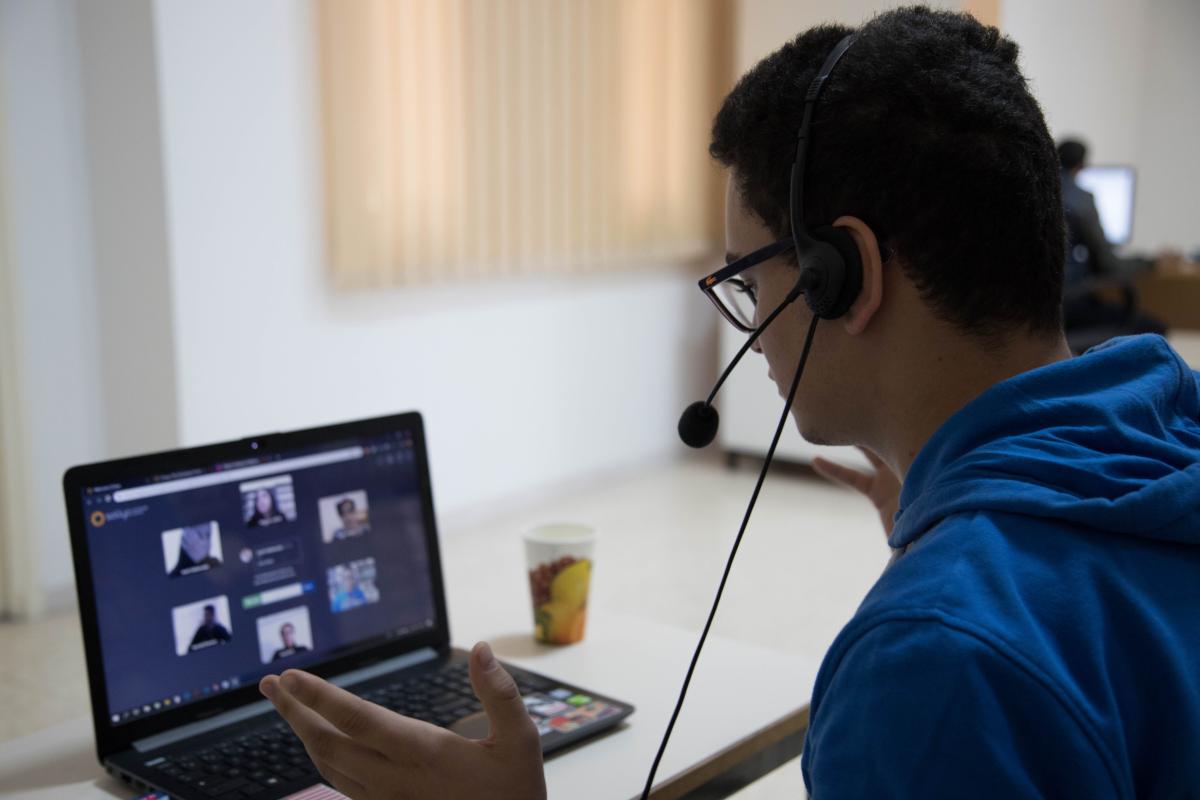
A new survey on the state of virtual international exchanges found growth in virtual exchange programming spurred by the COVID-19 pandemic, but it also identifies gaps in data about these programs and their quality and outcomes.
“What the report shows very clearly is there is a wide variety of program types in the virtual exchange field,” said Henry Shepherd, assistant director of the Stevens Initiative, a U.S. government–funded initiative administered by the Aspen Institute, which awards grants to virtual exchange programs that connect young people across countries. The Stevens Initiative conducted the survey, the second such assessment of the virtual exchange field
“There are many more than one ways to engage young people online in collaborative projects and in dialogue,” Shepherd said.
Most Popular
Virtual exchange programs can take a number of forms, ranging from linked courses, in which professors or teachers pair with colleagues in another country to connect two classrooms for collaborative learning, to non-curriculum-based programs that bring youths from different countries together to work on collaborative projects or engage in dialogues. Although the Stevens Initiative survey was not limited to the higher education sphere, the majority of respondents offering virtual exchange programs were higher education institutions (56 percent), followed by nongovernmental organizations (27 percent).
A total of 233 organizations responded to the survey, of which 214 reported offering virtual exchange programs in the 2020–21 academic year. Of these 214 organizations, 177 were able to provide data on their programs and collectively reported that they offered a total of 3,073 programs serving 224,168 participants.
The majority of participants represented in the survey were undergraduates (66 percent), followed by high school students (35 percent) and graduate students (29 percent). The most common subject areas for virtual exchange programs were intercultural dialogue and peace building; science, technology, engineering or mathematics; and global or international affairs.
The programs typically use a blend of real-time synchronous and asynchronous elements, with the survey finding no clear preference for one mode of delivery over another.
Most of the survey respondents—75 percent—were either based in the U.S. or originated their programs in the U.S. Most programs (about 63 percent) were conducted in English only, with another 20 percent conducted in English and a second language and about 4 percent conducted exclusively in a language other than English (data on language were not available for another 13 percent of programs).
The report identified mixed impacts of the pandemic on virtual exchange.
Related Stories
“Virtual exchange was already on a growth trajectory, but when in-person exchange ground to a halt in 2020, many institutions and organizations recognized the value of technology in continuing connections between youth and adults and either launched new programs or strengthened existing ones,” the report states. “Sixty-nine percent of survey respondents indicated their programming had increased as a result of the pandemic, while only 13 percent (or 23 organizations/institutions) indicated it had no impact on their programs.”
“In spite of these promising numbers, the impacts of the pandemic are complex, and the challenges faced by some virtual exchange practitioners should not be discounted. About 9 percent reported they had decreased their programming due to financial or other reasons, which likely stemmed from the negative impacts of the pandemic. Even if virtual exchange programs were not cancelled outright, some saw a drop in participation.”
The pandemic forced many traditional study abroad programs and international internship programs to shift their offerings online. Whether or not these “count” as virtual exchanges is a matter of definition: Shepherd said that in making decisions to fund programs, the Stevens Initiative pays attention to certain elements, including an emphasis on youth-to-youth connections that are mutually beneficial to young people from all countries involved.
“If there isn’t that mutual benefit for young people on both sides of the exchange, it wouldn’t necessarily fall squarely in the scope of virtual exchange as we’ve been funding and promoting it,” Shepherd said. “But we also try to take a broad view and we want to be as inclusive as possible. In plain terms, if you run an exchange program and the exchange program goes online, it is clearly an online or virtual exchange. So many people have shown an interest and indeed had to dive into these virtual exchange programs in the last couple years, and I hope that interest doesn’t wane.”
The report identifies a need to assess the quality of virtual exchange programs and to collect data on not only the scope and context of programs but also outcomes.
“The reason we drew this out and pointed this out is it’s really important for programs and initiatives themselves to start thinking about the quality of what they’re offering,” said Rajika Bhandari, an international education expert who assisted with the survey and is founder of the consultancy Rajika Bhandari Advisors. “One of the fundamental challenges that we found is even arriving at a common understanding of what is a virtual exchange program can be complicated. There’s such a range of programs, and very often data is not collected at a single point or by a single entity.”
"exchange" - Google News
November 17, 2021 at 03:09PM
https://ift.tt/3oArnCe
Report assesses state of virtual international exchanges - Inside Higher Ed
"exchange" - Google News
https://ift.tt/3c55nbe
https://ift.tt/3b2gZKy
Exchange
Bagikan Berita Ini














0 Response to "Report assesses state of virtual international exchanges - Inside Higher Ed"
Post a Comment